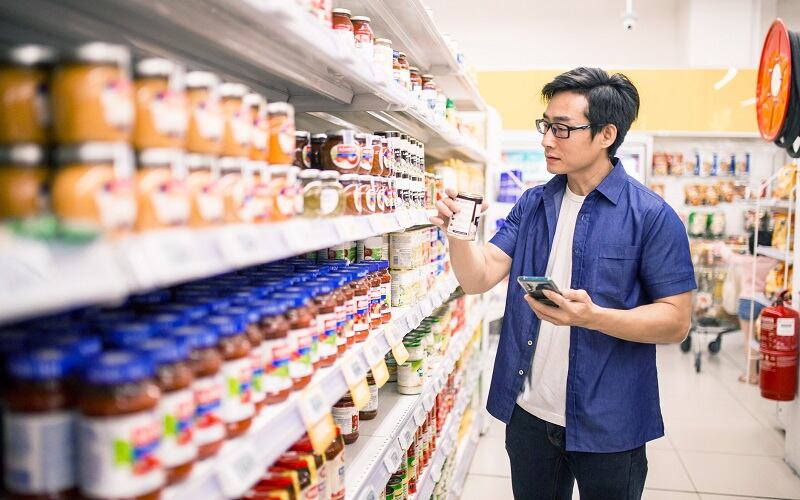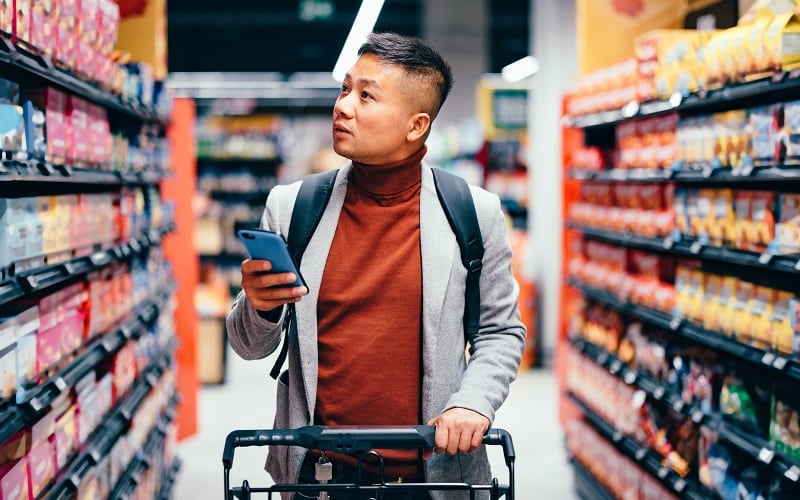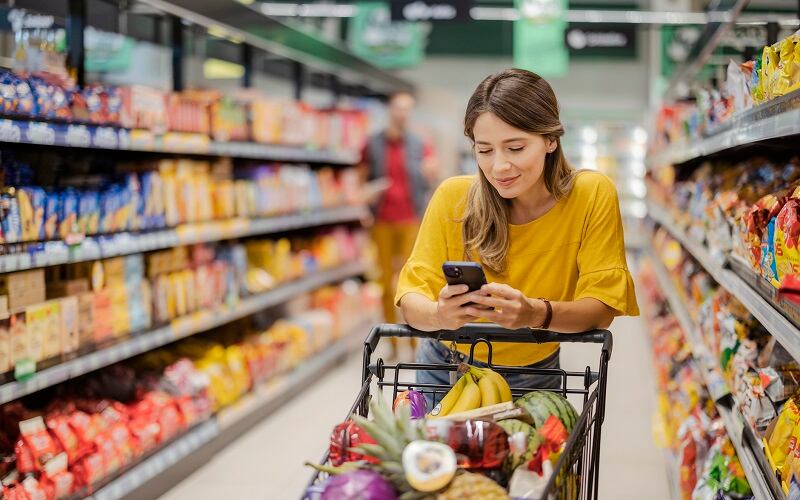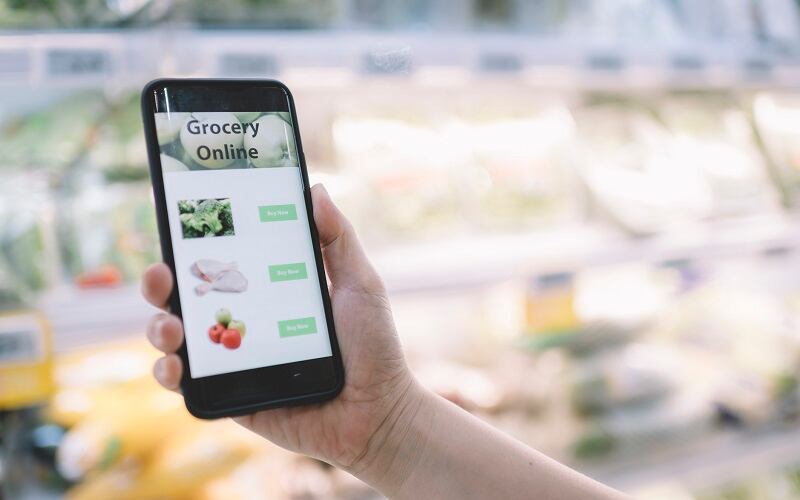"Fifty-two percent of all the online shoppers a year ago ... left the online channel, but they have not necessarily left the retailer," said Berthier. "Among all those shoppers who left the online channel, 60% return to the store, but 40% ... completely left a retailer both online and in-store."
In-store shopping means less money for retailers, not more
Having reached record heights during COVID, e-commerce sales, including ship-to-door and click-and-collect options, have declined slightly in sales this year, as inflation pushes consumers to brick-and-mortar stores. Some retailers might be glad about these consumers returning, but Berthier suggested that they shouldn’t be because these shoppers are spending less, based on SymphonyAI’s data of global retailers.
“For some retailers from a profitability standpoint, they're happy [with consumers returning], and we're saying, ‘No, no, you shouldn't be happy. That's very bad news’ because when they are going back to store they're spending less with you. They're spending 16% less with you, which means that they are completing the grocery shopping elsewhere. It means that they haven't been satisfied with their online shopping with you, but maybe they are doing the online shopping ... or completing their shopping in another store at one of your competitors.”
However, when it comes to the omnichannel shopper, they represent an opportunity to grow basket sizes and frequency of visits, Berthier said. When a consumer moves “from being in-store only to becoming an omnichannel, we see fantastic incremental spend between 15 and 18%,” she added.
“It is coming from both bigger baskets and an increased frequency of visits. So, they are visiting more frequently and doing bigger baskets. So, it's the combination of both. So, that's super interesting from the loyalty standpoint. It means that your customer is really more and more engaged [and] coming more frequently.”
E-commerce becomes a convenience channel, AI can make it more convenient
Consumers also are changing how they shop digitally, Berthier explained. Consumers are now creating smaller online baskets. This trend has been across age demographics, she added.
“Customers want to use it as a convenience channel and do much smaller baskets. And we have even seen this year, for the first time, more small baskets online than big baskets. So small baskets, it's what we call below 20 units, and we see much more smaller baskets than large baskets above 50 units.”
AI capabilities can help retailers and CPG brands add an extra level of convenience, by personalizing the shopping experience and simplifying product search, Berthier said.
“AI can really help you to identify who are the right top prospects; the ones who have a perfect profile to become your long-term loyal online shoppers,” Berthier said. “AI can help you identify the right target will [and] be very precise. And so then, you can send personalized offers to this specific group on offers that they are that are really relevant for them, so that you are really optimizing your marketing mix and recruitment campaigns.”





